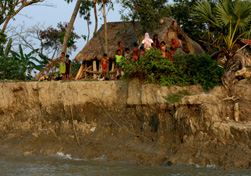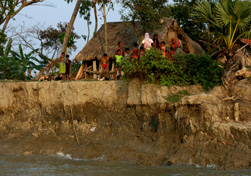Provisional Coal Statistics 2014-15
This statistics incorporates provisional information regarding coal, coal products & lignite of the preceding financial year along with past few years on reserve, production, despatch, pit-head closing
This statistics incorporates provisional information regarding coal, coal products & lignite of the preceding financial year along with past few years on reserve, production, despatch, pit-head closing
Brownish emission from Durgapur Steel Plant.
Non compliance with effluent standards: show cause notice from West Bengal Pollution Control Board dated 16.08.2010.
Consent to operate of M/s Steel Authority of India Ltd, Durgapur Steel Plant, located at P.O. & P.S. Durgapur, Dist. Burdwan.
Renewal of consent to operate under Section 25 & 26 of the Water (Prevention and Control of Pollution) Act, 1974, and Section 21 of the Air (Prevention and Control of Pollution) Act, 1981.

The District Human Development Report (DHDR) of South 24-Parganas released on 12th July 2010, says 15% of Sunderbans may be submerged by 2020. The report identifies the most pressing developmental constraints of the district.
<p>These District Human Development Reports of Parganas (N), 24-Parganas (S) & North Dinajpur released recently present key developmental challenges of the region. Also warn that Sunderbans is highly vulnerable to climate change & 15 percent of the region will be submerged by 2020.<br /><br />http://wbplan.gov.in/HumanDev/DHDR.htm<br /><br /><br />See Also<br />
Order of assessment from West Bengal Pollution Control Board to SAIL, Durgapur Steel Plant dated 06.05.2010.
Non compliance with effluent standards: show cause notice from West Bengal Pollution Control Board dated 01.04.2010.
Non compliance with effluent standards: show cause notice from West Bengal Pollution Control Board dated 16.03.2010.

The district human development report of North 24 Parganas portrays the diverse features of this district and also depicts the multilayered development that has taken place, over the past five to six decades. Burgeoning urbanisation and very presence of the Sunderbans open up a rare opportunity to the policy makers and practitioners of development of further study the intrinsic nature of